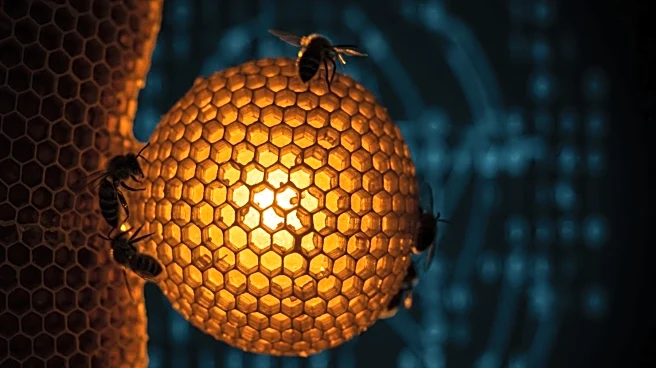Rapid Read • 7 min read
A recent study published in PLOS Biology explores the intricate process by which honeybees construct honeycombs, even under challenging conditions. Honeycombs are wax structures within hives that serve as storage for honey and nurseries for larvae. The study highlights the bees' ability to create hexagonal tessellations, a geometric pattern that maximizes storage efficiency with minimal wax usage. This research delves into the collaborative efforts of tens of thousands of bees working together to achieve this complex construction, raising questions about the individual roles and coordination among bees in a hive.
AD
Understanding the construction of honeycombs by bees can have broader implications for fields such as biomimicry and engineering. The efficiency and precision of honeycomb structures could inspire innovations in material science and architecture, potentially leading to more sustainable and resource-efficient designs. Additionally, insights into bee behavior and hive dynamics can contribute to conservation efforts, as bees play a crucial role in pollination and maintaining ecological balance. The study underscores the importance of preserving bee populations, which are vital to agriculture and biodiversity.
Further research may focus on the specific mechanisms and communication methods bees use during honeycomb construction. Scientists could explore how environmental factors influence hive building and whether similar principles can be applied to human engineering challenges. Conservationists might use these findings to advocate for policies that protect bee habitats and address threats such as climate change and pesticide use. The study opens avenues for interdisciplinary collaboration between biologists, engineers, and environmentalists.
AD
More Stories You Might Enjoy










